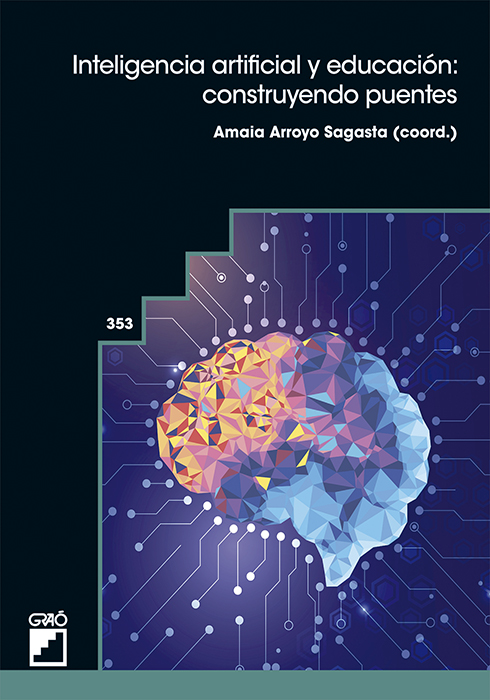- Books
- 9 de May de 2024
- No Comment
- 7 minutes read
Artificial Intelligence and education: building bridges

Artificial Intelligence and education: building bridges


In Prussian Königsberg, now Kaliningrad, there were seven bridges to which the mathematician Leonhard Euler dedicated, in 1736, the article “Solutio problematis ad geometriam situs pertinentis”. He founded graph theory and demonstrated that it was not possible to cross the seven bridges, returning to the starting point, passing through all of them and traversing each one only once. Thus, he solved the so-called problem of the bridges of Königsberg.

If I may be allowed the analogy, Amaia Arroyo has managed to coordinate in this work a walk like that of Königsberg, through seven basic bridges, currently under construction, between artificial intelligence (AI) and education. Because, as in all reflective educational practice, these are journeys that seem impossible without retracing our steps at some point, without reviewing how we work in the classroom, with what methodologies and technologies.
Arroyo challenges the teacher from the outset. In the introduction, she is direct when she demands us to learn constantly, for the sake of professionalism and essential technological updating in the 21st century. Because education needs it, she asserts. She also reassures the teachers to whom she addresses: she offers a distilled, light work, which empathizes with a troop tired of assuming more and more tasks, which needs useful and concrete materials, and formulates those questions that torment teachers, issues that will be addressed as the pages go by. It will be she who, in the end, synthesizes the journey of the path through the seven previous bridges, whose titles I have allowed myself to invent:
1. The students. So Mariona Grané starts by asking the students what they think of AI. She compiles some recent field studies, which we will not reveal here which, due to their fragmentation, place us in the moment of transition in which we find ourselves: digital literacy requires going beyond the instruments and their use, to promote the critical use of technology.
2. Knowledge is what places us above or below technology. And AI is no exception. Ainara Bilbao makes a remarkable dissemination effort to, summarizing what a teacher needs to know about AI. If teachers are users of AI like the one who is a passive user of the linguistic corrector, we are heading in the wrong direction.
3. Praxis. César Poyatos abounds in the practical possibilities that AI offers educators. He starts from a somewhat disordered reflection on inclusion and an original “Vaiana technique”, to then advise teachers on the programming of learning experiences, evaluation, the development of educational materials or, even, the simplification of bureaucracy.
4. Critical reflection. Far from uncritical pragmatism, José Luis Serrano and M.ª del Mar Sánchez stir up teachers on their particular cognitive bridge: will AI be substitutive or assistant? For what and why AI in education? Perhaps it is worth remembering here that having an elevator does not eliminate the stairs. New technologies always overlap the previous ones.
5. Creativity. If, as Jorge Wagensberg said, the opposite of creativity is mediocrity, is AI creative or mediocre? Beñat Flores dares with one of the perhaps greatest conflicts that generative AI has provoked: disputing the human being the standard of creativity.
6. Technohumanism. With some conceptual continuity with the previous bridge, Sara Osuna and Carlos Escaño explore the practical pedagogical possibilities of AI for artistic production, as well as its social impact, offering a wide assortment of resources for digital creation. Or should we say digital generation?
7. Technoethics. Exactly 50 years ago, at his famous Haifa conference, Mario Bunge coined the term ‘technoethics’ (Bunge, 1974, 2019). If there is something to thank OpenAI for, it is that the emergence of ChatGPT, at the end of November 2022, has accelerated technoethical reflection in society. And what was necessary before, is now urgent. That’s why the challenge with which Egoitz de la Iglesia closes his particular bridge is fundamental: a teacher’s technoethics must be built.
AI has entered the classroom uninvited. But there is no need to be alarmed. We still have the upper hand. As long as teachers can decide what technologies, how and for what enter the classroom, everything will be fine. Impositions, whether methodological or technological, are not good. Cross all the bridges that Amaia Arroyo has proposed to us, remembering that, as Euler demonstrated, on their walk they will not be able to return to the starting point without retracing their steps at some point.
Book Title: Inteligencia artificial y educación: construyendo puentes
Author: Amaia Arroyo Sagasta (coord.)
ISBN: 978-84-128529-1-2
Publisher: Graó
Language: Spanish
Number of pages: 120 pages
Publication date: April 2024
References:
– Bunge, M. (2019). Filosofia de la tecnologia. Barcelona: Edicions IEC-UPC. Available in [last access, April 30, 2024]: https://upcommons.upc.edu/handle/2117/169030
– Euler, L. (1736). Solutio problematis ad geometriam situs pertinentis. Available in [last access, April 30, 2024]: The Euler Archive https://scholarlycommons.pacific.edu/euler-works/53/ .
Source: educational EVIDENCE
Rights: Creative Commons


